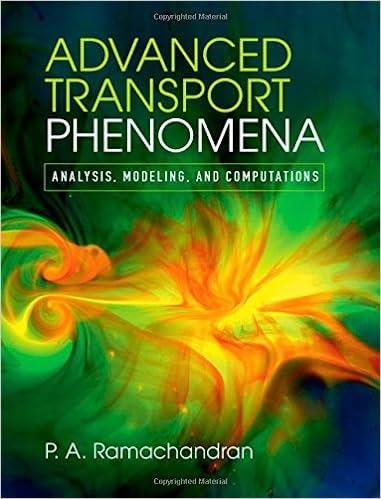The operator (abla) can be considered to be a vector operator. Here (tau) is considered as a
Question:
The operator \(abla\) can be considered to be a vector operator.
Here \(\tau\) is considered as a dyadic operator defined as
\[\tau=\sum_{i} \sum_{j} e_{i} e_{j} \tau_{i j}\]
With these definitions it is possible to write \(abla \cdot \tau\) in terms of the spatial differentiation on \(\tau\). The equation can be simplified using the following property of the dot product of a unit vector and a dyad:
\[\boldsymbol{e}_{i} \cdot\left(\boldsymbol{e}_{j} \boldsymbol{e}_{k}\right)=\delta_{i j} \boldsymbol{e}_{k}\]
where \(\delta_{i j}\) is the Kronecker delta.
Use these relations to derive the expression for the divergence of a tensor.
Similarly, by defining \(abla\) in cylindrical or spherical coordinates and carrying out the same operation on \(\tau\) expressed as a dyad, you should derive expressions for \(abla \cdot \tau\) cylindrical and spherical coordinates and verify the relations.
Step by Step Answer:

Advanced Transport Phenomena Analysis Modeling And Computations
ISBN: 9780521762618
1st Edition
Authors: P. A. Ramachandran





